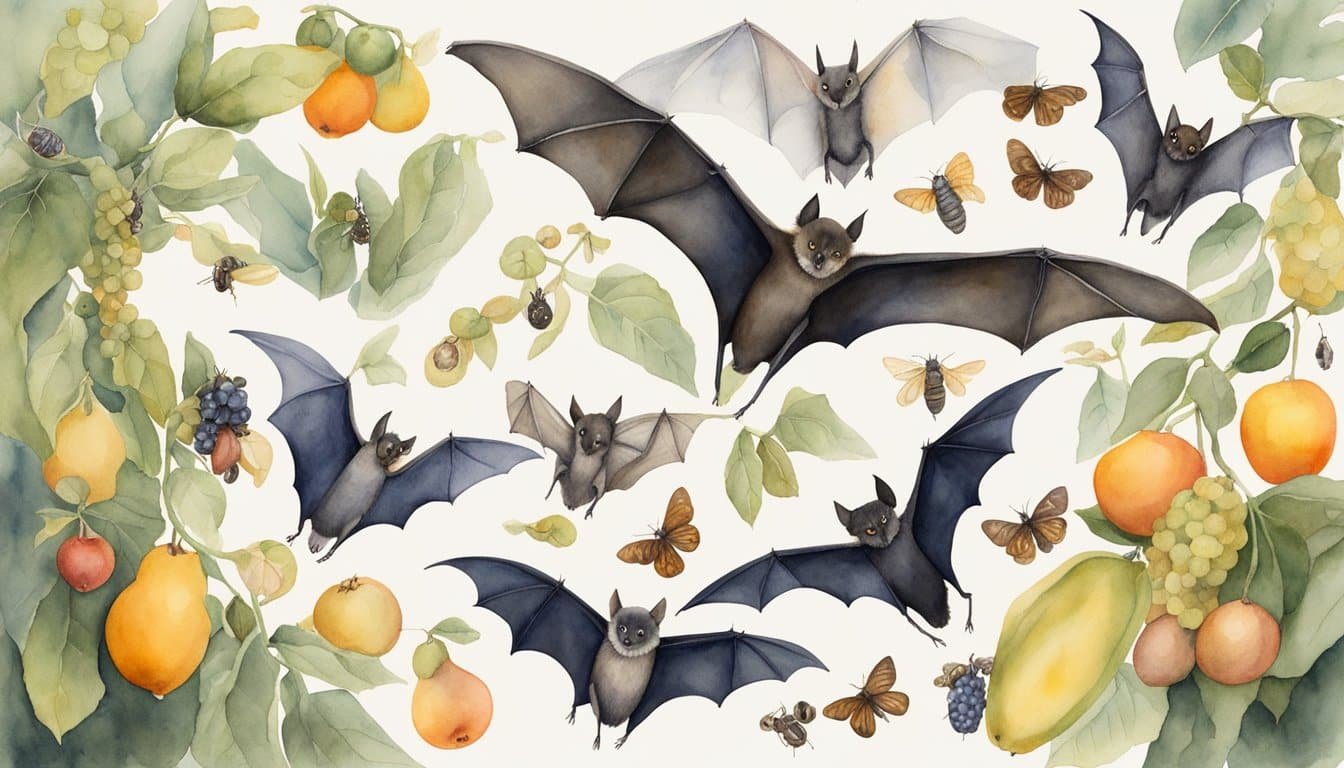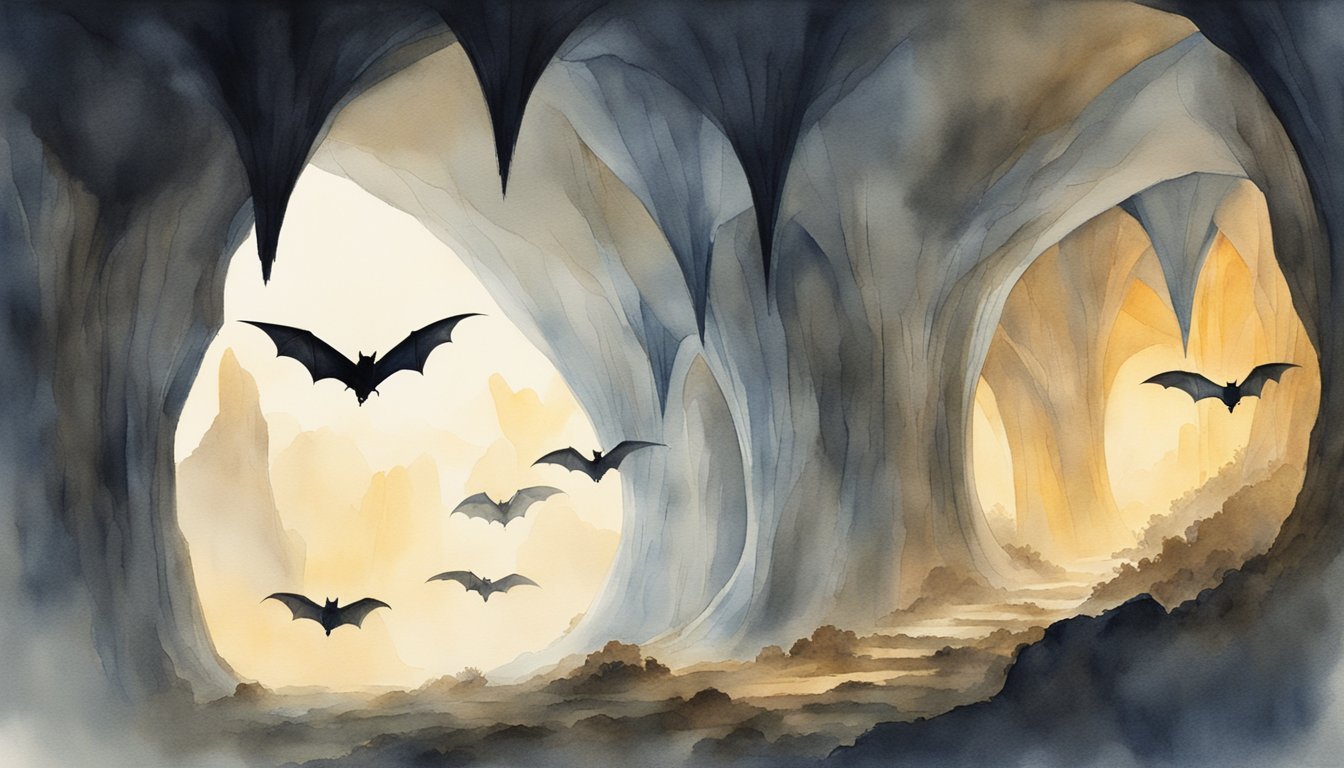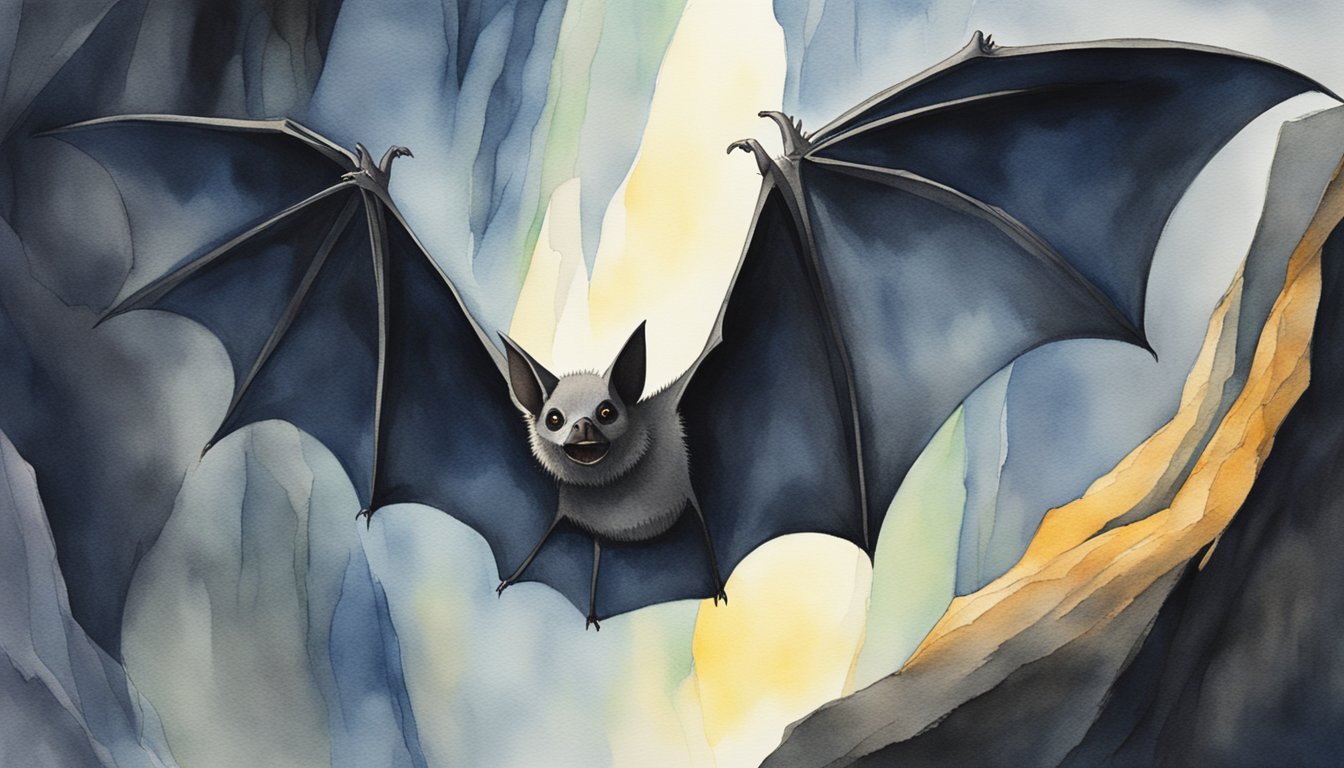Bat Vision Basics

Bats are fascinating creatures that have a unique way of seeing the world. Contrary to the phrase “blind as a bat,” these nocturnal animals do have the ability to see, though they rely heavily on echolocation to navigate and find food in the dark.
Understanding Echolocation
Echolocation is a biological sonar where bats emit high-frequency sounds that bounce off objects, producing echoes that return to the bats’ ears. These echoes help them to construct an image of their environment, effectively allowing them to “see” in complete darkness. This process is crucial for bats as it enables them to detect and catch prey, avoid obstacles, and locate their roosts. While most bats use echolocation to navigate, not all do. Some species, particularly fruit bats, have larger eyes and rely more on vision than echolocation.
- Echolocation Process:
- Emit: Bats produce high-frequency sounds.
- Echo: Sound waves bounce off objects and return.
- Interpret: Bats interpret the echoes to understand their surroundings.
Fruit bats, in particular, can see well in low-light conditions and have a preference for ultraviolet light, which assists them in finding ripe fruit and flowers.
Common Myths About Bat Sight
There are many misconceptions about bats and their ability to see. The most prominent is the myth that bats are blind. This is far from the truth; bats are not blind. Although their eyesight might not be their primary sense used for navigation and hunting, especially in darkness where their vision is less effective than during twilight hours, they still possess the capability to see.
- Myth Debunked:
- Blind as a Bat? Bats are not blind; they have eyes adapted for specific lighting conditions.
In some species of bats, eyesight is quite developed to see during twilight periods when there is just enough light. Considering their nocturnal activities, they have evolved to capitalize on their senses optimally. Bats have certainly mastered the art of using what they have to thrive in their ecological niches.
For example, referring to the study, “What is it like to be a bat?” using the integrated information theory, we gain insights into how bats might perceive the world through both vision and echolocation, varying from species to species.
Bat Species and Their Diets

While typically associated with the spooky stereotype that they are blind, bats actually have varied diets which reflect their diverse species and specialized feeding habits.
Fruit and Nectar Feeders
Fruit bats, often referred to as flying foxes, mainly consume fruits such as figs, mangoes, and bananas. They play a crucial role as pollinators and seed dispersers in tropical ecosystems. The Old World fruit bats, belonging to the family Pteropodidae, use their keen sense of smell to locate ripe fruits. These megabats have relatively large eyes and can see in color, which aids in their search for food.
Insectivorous Bats
The largest group of bats, the Microchiroptera, primarily feed on insects and are equipped with echolocation to hunt their prey. For example, the diets of British bats include a variety of insects which they locate in the dark using echo-location. Species such as the Big Brown Bat consume vast amounts of insects nightly, including beetles, wasps, and moths. The presence of these bats is beneficial to humans since they help in controlling pest populations.
Prey consumed by eight species of insectivorous bats from southern Illinois
Hematophagous Bats
Contrary to popular belief, very few bat species consume blood, and those that do, such as the infamous vampire bats, are found primarily in Latin America. These specialized bats have heat sensors in their noses to detect the warmest spot on a mammal to take a blood meal without causing harm. Vampire bats exhibit fascinating social behaviors, such as sharing food with colony members that did not feed successfully.
Diet, activity and reproduction of bat species (Mammalia, Chiroptera) in Central Amazonia, Brazil
Bat Navigation and Habitat

Bats are fascinating nocturnal animals renowned for their ability to navigate and move flawlessly through darkness. They thrive in various environments, from dense forests to open fields, and possess remarkable adaptations that aid in their survival.
Roosts and Flight Patterns
Bats find shelter in a variety of roosts, including caves, tree hollows, and even human structures. They use these roosts for resting, breeding, and protection from predators. Flight patterns of bats are incredibly agile, allowing them to expertly avoid obstacles at high speeds. The flight is also central to their hunting strategy as they pursue prey such as moths and rodents. Bats’ ability to navigate in their habitat relies heavily on echolocation—a process that enables them to detect objects by reflecting sound.
Echolocation helps bats to perform complex maneuvers through the forest or any given environment and to locate tiny insects, even in complete darkness. Their navigation skills also play a crucial role in avoiding collisions with larger birds and help them return to their roosts after foraging.
Adaptations for Survival
Bats display a variety of adaptations that enhance their chances of survival in the natural world. Their nocturnal lifestyles help them avoid diurnal predators and competition for food resources. With keen hearing and a sophisticated echolocation system, they can detect prey and eaters with astonishing precision. Bats’ wings are another adaptation, providing the necessary lift and maneuverability for sustained flight and agility.
The diet of bats is beneficial to their habitats as well. By consuming large numbers of pests like moths and beetles, bats help control insect populations. In doing so, they also contribute to the health of forests and fields. Moreover, bat guano is an excellent fertilizer, enriching the soil and promoting plant growth, which in turn supports a wide range of other species in the ecosystem.
In some parts of the world, bats contribute to the pollination of plants and spreading of seeds, thus maintaining the diversity and vitality of the environment they inhabit. Ensuring the protection of these valuable creatures and their habitats not only preserves their intricate navigation systems but also the ecological balance they support.

